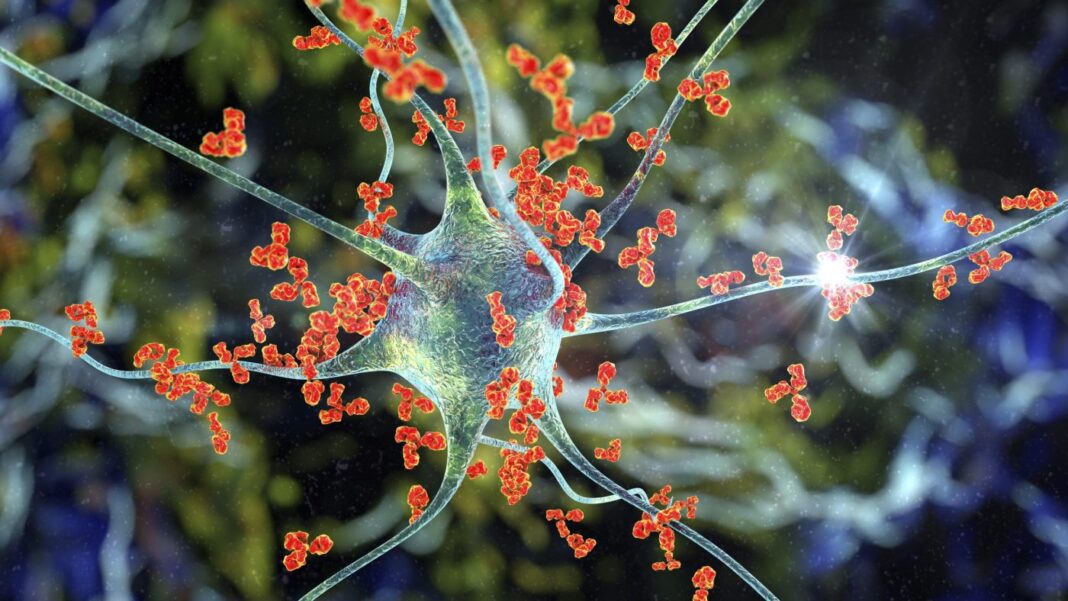While autoantibodies have been implicated as central players in a range of serious autoimmune diseases, researchers from Arizona State University published a study “Serum autoantibodyome reveals that healthy individuals share common autoantibodies” in Cell Reports that showed that autoantibodies are also found in healthy individuals. This fact may make the diagnostic use of autoantibodies as sentinels of autoimmune disease more challenging, according to the scientists.
“Autoantibodies are a hallmark of both autoimmune disease and cancer, but they also occur in healthy individuals. Here, we perform a meta-analysis of nine datasets and focus on the common autoantibodies shared by healthy individuals. We report 77 common autoantibodies based on the protein microarray data obtained from probing 182 healthy individual sera on 7,653 human proteins and an additional 90 healthy individual sera on 1,666 human proteins. There is no gender bias; however, the number of autoantibodies increase with age, plateauing around adolescence,” write the investigators.
“We use a bioinformatics pipeline to determine possible molecular-mimicry peptides that can contribute to the elicitation of these common autoantibodies. There is enrichment of intrinsic properties of proteins like hydrophilicity, basicity, aromaticity, and flexibility for common autoantigens. Subcellular localization and tissue-expression analysis reveal that several common autoantigens are sequestered from the circulating autoantibodies.”
Improved awareness of the role of autoantibodies
An improved awareness of the pervasiveness and role of autoantibodies in human health and disease may ultimately help in the design of better diagnostics and therapeutics against a range of illnesses, notes Joshua LaBaer, MD, PhD, executive director of ASU’s Biodesign Institute as well as the director of the Biodesign Virginia G. Piper Center for Personalized Diagnostics.
“Historically, we looked for autoantibodies present only in disease, but we’ve always been intrigued because our healthy controls always had autoantibodies too,” he says. “So, we decided to see if any of these ‘healthy autoantibodies’ were common in healthy people and sure enough many of them were. Knowing about these will help us avoid confusion in future studies.”
Though these common autoantibodies do not appear to cause disease, they nevertheless appear in as many as 40% of the people tested. It is likely that at least some of these common autoantibodies have been mistakenly identified as disease antibodies.
The researchers performed a meta-analysis of nine datasets. The tool of choice for exploring the common autoantibodies is a protein microarray. Here, thousands of individual proteins are affixed to a glass slide. When a sample of blood is spread over the microarray, antibodies, (in this case, autoantibodies) bind with specific protein antigens.
The microarrays were subjected to two rounds of screening. In the first round, 182 blood samples from healthy individuals were screened against 7,653 human proteins. In the second round, 90 blood samples were screened against 1,666 human proteins. The experiments identified a total of 77 common autoantibodies.
The blood samples came from healthy individuals of both sexes, ranging in age from infancy to 84 years old. The results showed that the number of autoantibodies increased from birth up to the age of adolescence and then plateaued. Further, the number of autoantibodies detected was the same regardless of sex, a surprising outcome given the large disparity between men and women in the prevalence of autoimmune disease.
Another underlying enigma is why common autoantibodies fail to produce autoimmune disease. Although such antibodies appear to have evaded the screening process leading to immune tolerance, their occurrence in the body remains benign. It is believed that autoimmune pathology requires autoantibodies to bind and form complexes with autoantigens, and this may be blocked in the case of common autoantibodies.
Future research promises to unlock many more secrets concerning the nature of autoantibodies, says LaBaer, adding that the current study examined less than half of all human proteins. Most likely, additional common autoantibodies remain to be uncovered.


